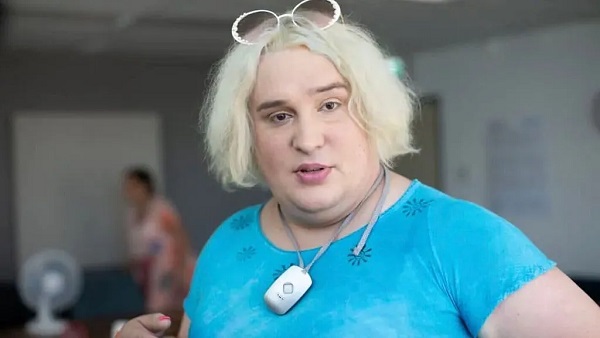Opinion
Success Of Canada’s Women Does Not Mean Men Failed
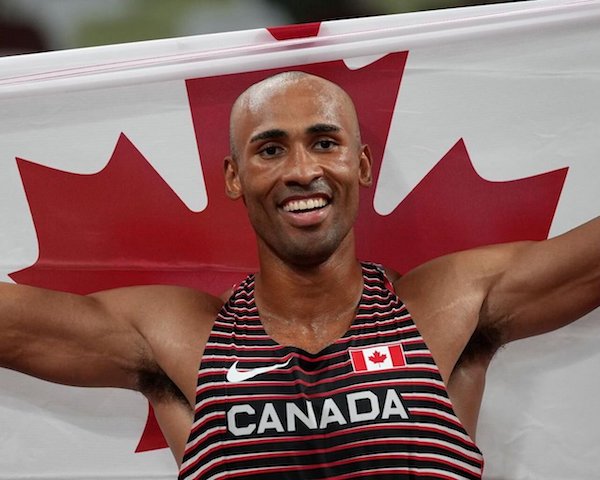
As usual, the Olympics delivered transcendent national moments for Canada.
It happens every Games. In 2010 the host city of Vancouver itself was the moment that provided a binding agent. In 1996 it was Donovan Bailey crushing the Americans on the track. In 1976 it was a lone high-jump silver medal by Greg Joy. This time in Tokyo it was Christine Sinclair & Co. (the women’s soccer team), a sprinter from Markham and a race walker from B.C. who remind Canadians of who they are, why they are, and how much reinforcement of a single nationality matters.

Except it rarely happens. Canada needs to win. Not all the time. Just enough to make the plucky challenger role thing work. Beating the U.S. in women’s soccer might be the ultimate underdog role that tells the 36 million chez nous that for all its horrific weather and language stress the Great White North is a good place to live.
Unfortunately the five percent who think they run modern Canada don’t count blessings they way they used to. A prime minister in a hurry to call an election during a pandemic— that he’s abetted— sees the roll of honour quite differently.
It’s now a diversity dance. In place of promoting unity while wearing the maple leaf the PM promotes separating Canadians by their Woke characteristics. Pitting segments of society to achieve peak tribal identity is his MO. In this Orwellian construct he’s fully backed by host broadcaster CBC, the rest of the bought media and labour leaders like Jerry Dias.
The laboured attempts to paint the Olympics as a political coming-out party was a hallmark of the CBC News Olympic features about Canada’s winners. When the Corp allowed its sports announcers like Steve Armitage, Mark Lee or Doug Dirks to call it straight you might be persuaded that it was your grandfather’s Olympics still.
Don’t be fooled. The PM who worships his brand of diversity (but practices otherwise) sees the Olympics as a blue-check exercise in drawing new lines between people who struggle at the best of times to find some unifying concept. (Just ask the CFL which adopted his “diversity” mantra but then was stiffed at its time of crisis by a government with loftier public goals to achieve alongside WE. )
According to Justin Trudeau Reality (taught by Gerry Butts) the final medal standings at the Tokyo Games should read something like this:
CDN. women athletes/ teams 19
Biopoc single athletes. 5
Muslim medal winners 1
LGBTQ (all nations) 182
Trans CDN athletes 1
Privileged white walkers 1
Gold medals for our Chinese friends 38
The loudest progressive braying will likely be about the preponderance of medals won by Canada’s (traditional) women athletes. Of the gold, silver and bronzes handed out to athletes (for them to put on themselves) women and teams of women garnered 19 medals.
It was a great show. From the first medal (Caileigh Filmer, Hillary Janssens for rowing) to the final gold (Kelsey Mitchell in cycling sprint) women did dominate the standings for Canadians. And beat the smug Americans in soccer. This led the usual suspects to gloat about how men couldn’t keep up/ were lacking moral fibre etc. Where would the nation be without the fruits of progressive feminism?
A few caveats here. In about half the nations in the world women are not allowed to compete at all or are severely hampered by religious doctrines or cannot get funding for the rigorous training needed to make an Olympic final. In short the talent pool that Canadian women swim in is clearly smaller by a large factor than that in which the male athletes compete.
So when you’re watching an Olympic final in rowing or cycling or wrestling the odds that a Canadian woman gets on the podium increase exponentially over what can be expected for a man. A good example is Kelsey Mitchell gold in pursuit. From RBC’s camps identifying her athletic talent to winning the gold was a stunning two years. It’s remarkable, but it’s also virtually impossible in a men’s competition.
It might also help the chances of Canadian men if so many elite athletes didn’t choose hockey as a sport. By the time many realize they won’t make the NHL it’s almost too late to get into a sport as late as Mithchell did.
Another factor aiding Canadian women continues to be the Title IX regulations governing American collegiate sport. U.S. schools have to offer an equal number of sports scholarships to women as to men. Often they cannot find enough elite athletes in some sports to fill out their quotas. (See the Felicity Huffman/ Lori Loughlin scandal )
And so Canadian women have flooded into the NCAA to receive elite training and competition. From swimming (Maggie MacNeil, Michigan) to basketball (Kia Nurse, Connecticut) to soccer (Christine Sinclair) many of Canada’s Olympians are honed outside the country thanks to evening the scholarships. Which solves the age-old dilemma of how to get Canadian sponsors to pony up for future Olympians.
The great question now as Trudeau tries to lock-in his concept of diversity is will the Canadian public finally accept the sporting version of his propaganda? Outside the plum events such as Olympics and world championships, the public has been reluctant to give up its traditional NHL and other team sports to root for women?
And how will it accept the new reality of trans athletes and gender fluidity? People tuning in for a sports event don’t react well when they find they’ve signed up for a BLM, CRT or Liberal Party lecture.
For now, enjoy. And don’t let any politician steal the glory of Canada’s Olympians.
Bruce Dowbiggin @dowbboy is the editor of Not The Public Broadcaster (http://www.notthepublicbroadcaster.com). The best-selling author of Cap In Hand is also a regular contributor to Sirius XM Canada Talks Ch. 167. A two-time winner of the Gemini Award as Canada’s top television sports broadcaster, his new book Personal Account with Tony Comper is now available on http://brucedowbigginbooks.ca/book-personalaccount.aspx
Business
Mark Carney’s Fiscal Fantasy Will Bankrupt Canada
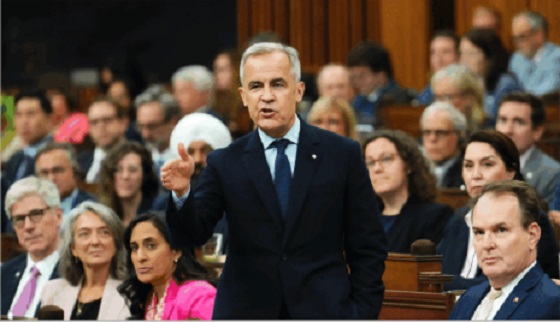
By Gwyn Morgan
Mark Carney was supposed to be the adult in the room. After nearly a decade of runaway spending under Justin Trudeau, the former central banker was presented to Canadians as a steady hand – someone who could responsibly manage the economy and restore fiscal discipline.
Instead, Carney has taken Trudeau’s recklessness and dialled it up. His government’s recently released spending plan shows an increase of 8.5 percent this fiscal year to $437.8 billion. Add in “non-budgetary spending” such as EI payouts, plus at least $49 billion just to service the burgeoning national debt and total spending in Carney’s first year in office will hit $554.5 billion.
Even if tax revenues were to remain level with last year – and they almost certainly won’t given the tariff wars ravaging Canadian industry – we are hurtling toward a deficit that could easily exceed 3 percent of GDP, and thus dwarf our meagre annual economic growth. It will only get worse. The Parliamentary Budget Officer estimates debt interest alone will consume $70 billion annually by 2029. Fitch Ratings recently warned of Canada’s “rapid and steep fiscal deterioration”, noting that if the Liberal program is implemented total federal, provincial and local debt would rise to 90 percent of GDP.
This was already a fiscal powder keg. But then Carney casually tossed in a lit match. At June’s NATO summit, he pledged to raise defence spending to 2 percent of GDP this fiscal year – to roughly $62 billion. Days later, he stunned even his own caucus by promising to match NATO’s new 5 percent target. If he and his Liberal colleagues follow through, Canada’s defence spending will balloon to the current annual equivalent of $155 billion per year. There is no plan to pay for this. It will all go on the national credit card.
This is not “responsible government.” It is economic madness.
And it’s happening amid broader economic decline. Business investment per worker – a key driver of productivity and living standards – has been shrinking since 2015. The C.D. Howe Institute warns that Canadian workers are increasingly “underequipped compared to their peers abroad,” making us less competitive and less prosperous.
The problem isn’t a lack of money; it’s a lack of discipline and vision. We’ve created a business climate that punishes investment: high taxes, sluggish regulatory processes, and politically motivated uncertainty. Carney has done nothing to reverse this. If anything, he’s making the situation worse.
Recall the 2008 global financial meltdown. Carney loves to highlight his role as Bank of Canada Governor during that time but the true credit for steering the country through the crisis belongs to then-prime minister Stephen Harper and his finance minister, Jim Flaherty. Facing the pressures of a minority Parliament, they made the tough decisions that safeguarded Canada’s fiscal foundation. Their disciplined governance is something Carney would do well to emulate.
Instead, he’s tearing down that legacy. His recent $4.3 billion aid pledge to Ukraine, made without parliamentary approval, exemplifies his careless approach. And his self-proclaimed image as the experienced technocrat who could go eyeball-to-eyeball against Trump is starting to crack. Instead of respecting Carney, Trump is almost toying with him, announcing in June, for example that the U.S. would pull out of the much-ballyhooed bilateral trade talks launched at the G7 Summit less than two weeks earlier.
Ordinary Canadians will foot the bill for Carney’s fiscal mess. The dollar has weakened. Young Canadians – already priced out of the housing market – will inherit a mountain of debt. This is not stewardship. It’s generational theft.
Some still believe Carney will pivot – that he will eventually govern sensibly. But nothing in his actions supports that hope. A leader serious about economic renewal would cancel wasteful Trudeau-era programs, streamline approvals for energy and resource projects, and offer incentives for capital investment. Instead, we’re getting more borrowing and ideological showmanship.
It’s no longer credible to say Carney is better than Trudeau. He’s worse. Trudeau at least pretended deficits were temporary. Carney has made them permanent – and more dangerous.
This is a betrayal of the fiscal stability Canadians were promised. If we care about our credit rating, our standard of living, or the future we are leaving our children, we must change course.
That begins by removing a government unwilling – or unable – to do the job.
Canada once set an economic example for others. Those days are gone. The warning signs – soaring debt, declining productivity, and diminished global standing – are everywhere. Carney’s defenders may still hope he can grow into the job. Canada cannot afford to wait and find out.
The original, full-length version of this article was recently published in C2C Journal.
Gwyn Morgan is a retired business leader who was a director of five global corporations.
Opinion
Charity Campaigns vs. Charity Donations

Over the past few years, I’ve had canvassers coming to my home in Toronto on behalf of a wide range of non-profits – including hospitals and mental health and homeless support organizations. The fundraisers all “wear” a noticeable post secondary student vibe. That’s hardly news.
But curiously, no matter what they’re collecting for, every last one of them uses the exact same methodology. That is, they refuse to take a one-time donation, instead insisting I sign up for six (not seven, and definitely not five) monthly payments. They don’t want me donating online through the organization’s website (explaining that they wouldn’t get credit for that). They do expect me to enter my basic information on a high-end tablet they’re carrying. When that’s done, they’ll use their smartphones to make a call to a remote agent who would take my financial information.
I only completed the process once – for the Hospital for Sick Children (SickKids) in Toronto. But that was mostly because, at the time, they were in the middle of quite literally saving my granddaughter’s life. I couldn’t very well say no.
Because of the paranoia that comes with my background in IT systems administration, I generally don’t participate, explaining that I never share financial information on a call I didn’t initiate. At the same time, these campaigns are not fraudulent and, with the possible exception of UNICEF, they all represent legitimate organizations. Nevertheless, they all come with the clear fingerprints of a third-party, for-profit company. Which makes me curious.
After a little digging, it became clear that a company called Globalfaces Direct was the most likely employer of the face-to-face (F2F) canvassers I’m seeing. It’s also obvious that those canvassers are paid at least partially through revenue-based commissions.
Estimating how much of your donations are actually used for charitable work can be difficult. For once thing, in the case of SickKids, it’s not even clear which organization the money is going to. There at least three related non-profit accounts registered with CRA: The Hospital for Sick Children, The Hospital for Sick Children Foundation, and the SickKids Charitable Giving Fund.
But even where there isn’t such ambiguity we have only limited visibility into an organization’s finances. Covenant House, for instance, issued receipts for $26 million in donations for 2024, but there’s no way to know how much of that came through Globalfaces Direct F2F campaigns. And there’s certainly no public record indicating how much of that $26 million was spent on commissions and overhead. CRA filings for Covenant House do report fundraising costs of $9.4 million in 2024, which was 22 percent of their total spending and 32 percent of all donations.
It’s likely that their $9.4 million in fundraising costs includes Globalfaces Direct’s canvasser commissions and overhead costs. But those are only some of the costs – which likely include events, direct mail, and other in-house efforts. In fact, it’s not unreasonable to assume that only 20-30 percent of each dollar raised through F2F canvassing is actually spent on charity work.
From the perspective of the non-profit, hiring F2F companies can generate new sources of stable, long-term income that would have been otherwise unattainable. Especially if the F2F agreement specifies withholding a percentage of what’s collected rather than charging a flat fee, then a non-profit has nothing to lose. Why wouldn’t SickKids or Covenant House sign up for that?
Of course, a lot of that will depend on how you think about the numbers. Taken as a whole, an organization that spends just 32 percent of their donations on fundraising activities is well within CRA guidelines: “Fundraising is acceptable unless it is a purpose of the charity (a collateral non-charitable purpose).” But if we just looked at the money raised through a F2F campaign, that percentage would likely be a lot higher.
Similarly, CRA also expects that: “Fundraising is acceptable unless it delivers a more than incidental private benefit.” In other words, if a private company like Globalfaces Direct were to realize financial gain that’s “more than incidental”, it might fail to meet CRA guidelines.
Unfortunately, there’s no easy way for donors to assess the numbers on those terms. So regular people who prefer to direct as much of their donation as possible to the actual cause will generally be far better off donating through an institution’s website or, even better, through a single CRA-friendly aggregator like CanadaHelps.org.
But it would be nice if CRA reporting rules clearly broke those numbers down so we could judge for ourselves.
-
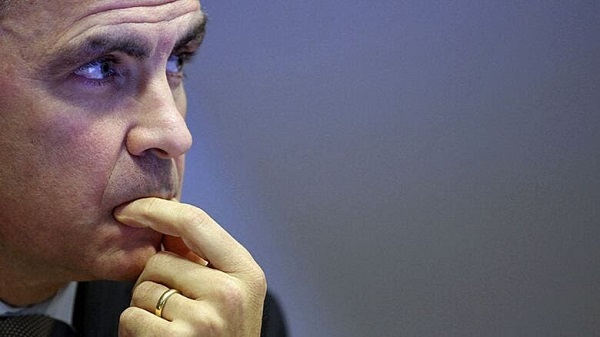
 Business1 day ago
Business1 day agoCarney government should apply lessons from 1990s in spending review
-
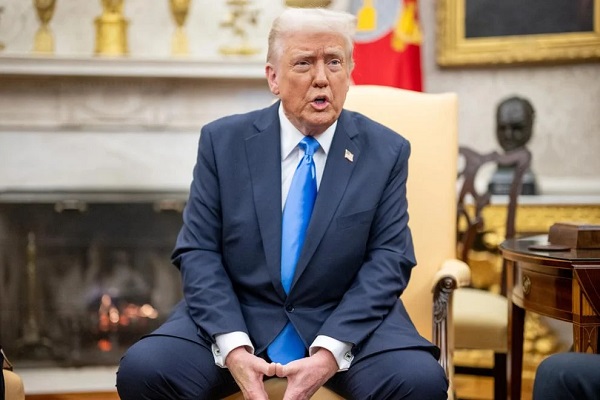
 Business1 day ago
Business1 day agoTrump to impose 30% tariff on EU, Mexico
-

 illegal immigration2 days ago
illegal immigration2 days agoICE raids California pot farm, uncovers illegal aliens and child labor
-

 Entertainment1 day ago
Entertainment1 day agoStudy finds 99% of late-night TV guests in 2025 have been liberal
-

 Energy1 day ago
Energy1 day agoLNG Export Marks Beginning Of Canadian Energy Independence
-

 Frontier Centre for Public Policy14 hours ago
Frontier Centre for Public Policy14 hours agoCanada’s New Border Bill Spies On You, Not The Bad Guys
-

 Uncategorized14 hours ago
Uncategorized14 hours agoCNN’s Shock Climate Polling Data Reinforces Trump’s Energy Agenda
-
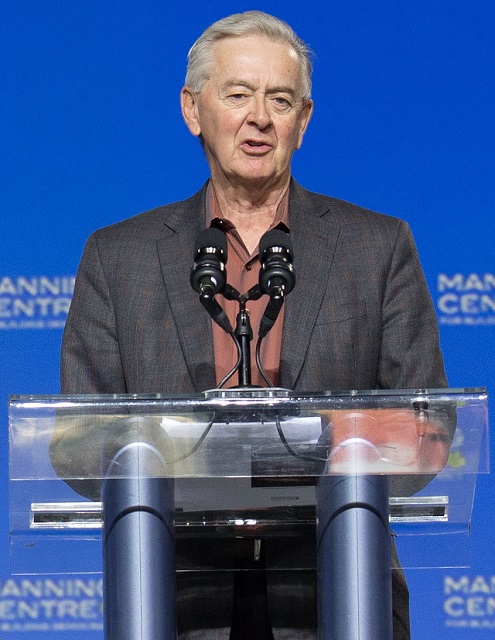
 Opinion6 hours ago
Opinion6 hours agoPreston Manning: Three Wise Men from the East, Again


